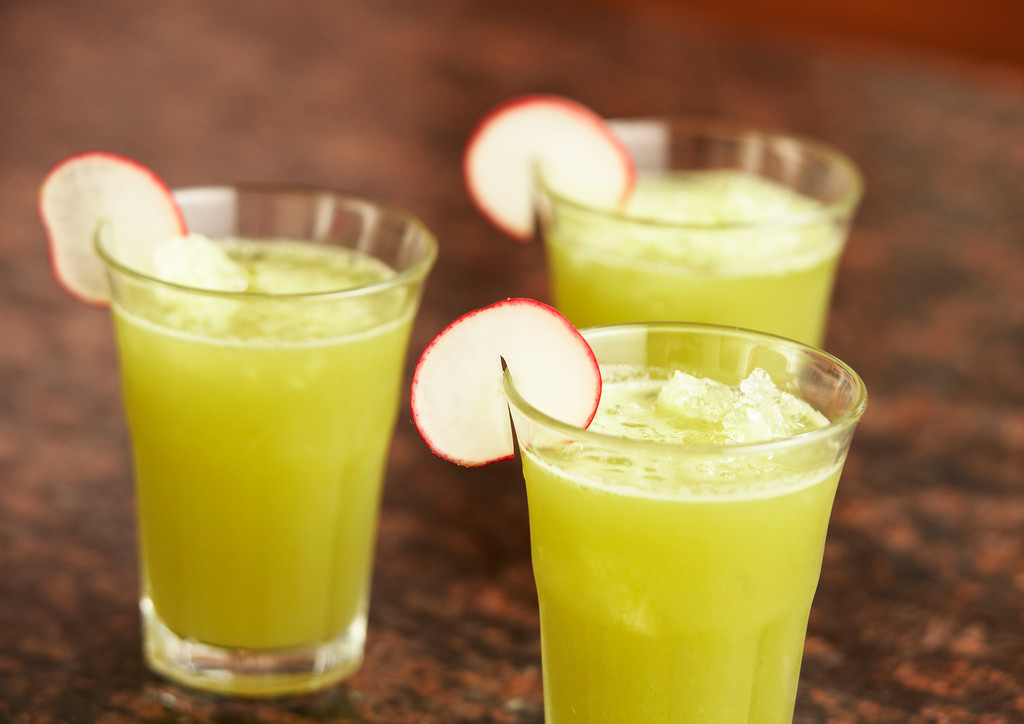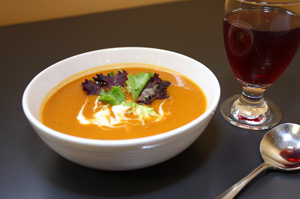Psychologists are beginning to do more research on what affects our perception of certain senses. Factors like visual and auditory senses have the power in determining how sweet, sour, or bitter you think the flavour is. Here are some ways that our brain is helping us taste.
Emotion

Photo courtesy of Alex Lebedev on flickr.com
Your mood at the time you are eating the dish has a large impact on how you perceive taste. According to Corinna Noel and Robin Dando’s research, when people are in a positive mood, they are more sensitive to the taste of sweetness. If they are experiencing negative emotions, that tends to heighten the sensitivity to sour tastes.
Scientists are predicting this is due to the increase in the chemical serotonin released in the brain when people are experiencing positive emotions, but more research is needed to support this idea.
Colors Influence Taste

Photo courtesy of Food Thinkers on flickr.com
The flavor that is being perceived is strongly related to the color that you see. In many studies, the colour of the drink strongly influenced the participant’s guess as to what flavour the drink was.
According to the research by Ndom, Elegbeleye, and Ademoroti, even though there was no association to the actual flavor of the drink, the color of the drink was what highly influenced participant guesses. For example, a green-flavored drink was associated with a citrus lime flavor whereas a red drink was associated more with a sweet strawberry flavor.
Fun Fact: Colorless, caffeine-free Crystal Pepsi and Heinz’s Colored Ketchup did not succeed because people said that they tasted different even though the perceived flavours were not in fact on the ingredients list.
Sound and Music

Photo courtesy of Andrew Malone on flickr.com
Sound is beginning to be implemented in restaurants as a way to enhance the taste of the dishes being served. One of the most famous examples of this comes from The Fat Duck restaurant in Berkshire. The owner had a special menu called Sounds of the Sea where they served seafood accompanied by an iPod containing ocean sounds which. According to many customers, this added to the taste and experience of the dish.
Furthermore, researchers have discovered a correlation between high-pitched sounds and the sweetness as well as low-pitched sounds and bitterness when eating bitter-sweet flavours such as dark chocolate or toffee as discussed in Amy Fleming’s article. This phenomenon is called modulating taste and is not fully understood by scientists, but research is being done to further develop the reasoning behind this correlation.
Plating

Photo courtesy of Stickling’s Bakery Ltd.
According to Peter Stewart and Erica Goss’s research, round white plates lead to a 20 percent increase in people rating the food as sweeter and a 30 percent increase in the intensity of the flavours in the meal. Certain theories suggest that the reason behind this phenomenon is that the colours of the food served on a white plate are more vibrant, leading to a perception of a more intense flavour.
In the end, our brain is doing a lot more than just enjoying that piece of cake. Everything, from our emotions to the colour of the food and the sounds around us, plays an important part in how much we enjoy the food we are tasting. So next time you are out in a restaurant, have a bite of your delicious meal and enjoy the taste of all your senses coming together.

